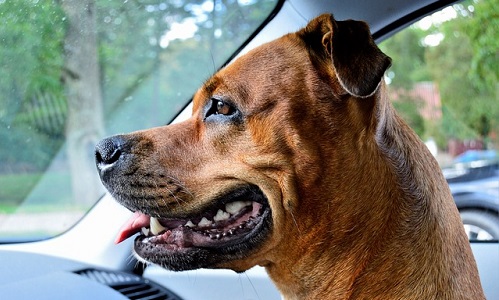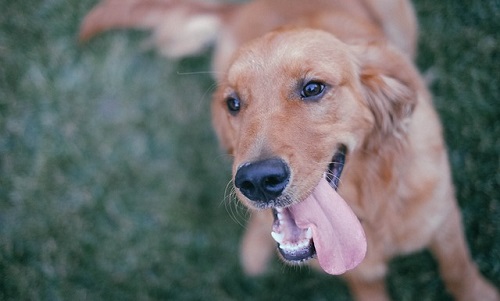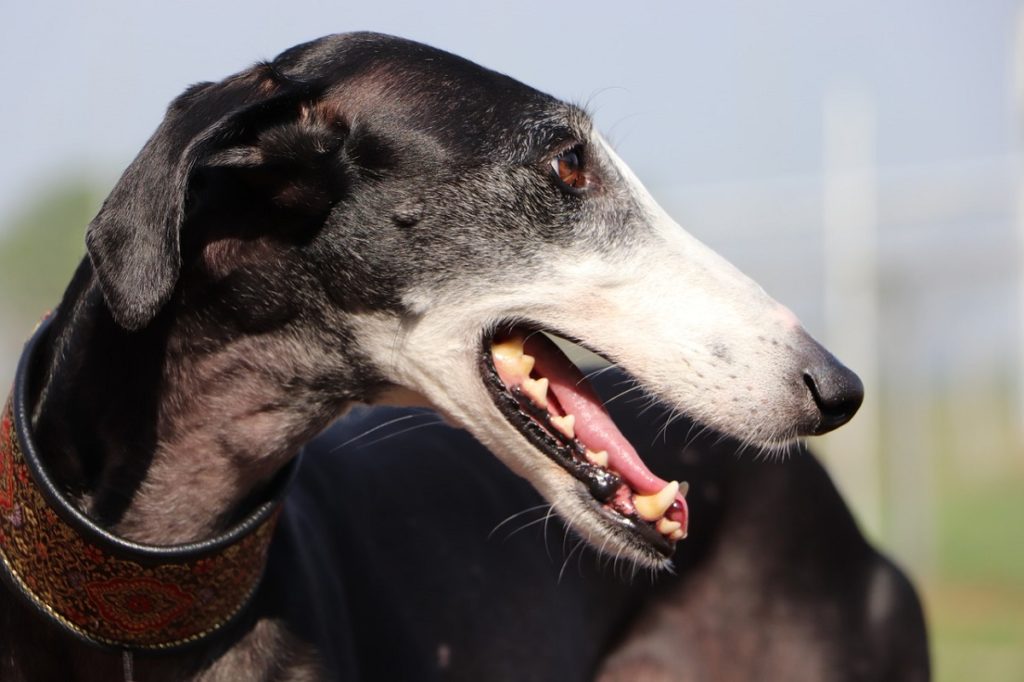Dental cavities in dogs are rare—only about 5 percent of dogs are affected. However, when they do occur, it can become a serious problem. Cavities, or caries, can develop at any age, in any breed, and any sex. The shape of a dog’s teeth make it more difficult for cavities on dog’s teeth to develop.
This guide will explain cavities in dogs, how they form, how to treat them, and how to prevent future ones from forming.
What are Cavities in Dogs?
Cavities are areas of tooth decay that are caused by loss of calcium in the enamel of a dog’s tooth. They occur when dental hard tissues decay as a result of oral bacteria on the tooth’s surface. Cavities can develop in between teeth if they grow too close together, and at the root of the tooth, in between a dog’s tooth and gum.
Cavities in dogs are typically classified as pit-and-fissure caries, smooth-surface caries, or root caries.
The most common site of cavities in dogs, when they do occur, is the pit of the top and bottom maxillary first molars. This tooth is the most similar in shape to a human’s teeth; it has deep grooves, allowing tooth decay can grow. If you hold your dog’s mouth open, the maxillary first molar is the second-to-last tooth in the back.
Causes of Cavities
The health of a dog’s teeth is dependent on the exchange of minerals of the enamel and the enzymes in his saliva. Cavities in dogs are caused by bacteria fermenting on the tooth surface, throwing off the animal’s natural balance. This fermentation leads to the production of acids that break down the tooth’s enamel and dentin. Without this shield, the infected area begins to be digested by bacteria and white blood cells.
Cavities on dog’s teeth are often caused by a combination of poor oral hygiene, a diet high in fermentable carbohydrates, a low salivary pH, and poor health in general. When a dog’s teeth grow very close together (so there are no gaps), it can result in smooth-surface caries. Enlarged gaps between the teeth and gums, offer pockets where bacteria can fester, and lead to root carries. The most common place for cavities—the maxillary first molar—will typically develop pit-and-fissure caries, in the grooves and pits where the top and bottom teeth meet together.
Signs & Symptoms of Cavities in Dogs
Determining whether your dog has a cavity or not on your own can be difficult. Dogs rarely show signs of dental pain, so whether yours had a cavity or a cracked tooth, you probably wouldn’t notice any significant behavioral changes.
The only sign of cavities on your dog’s tooth is actually seeing it. A true dog cavity will have a dark brown or black appearance; it would be much darker than normal canine dental stains. The best way to know if your pet has a cavity is to examine and brush your dog’s teeth on a regular basis.
While there are very few—if any—signs and symptoms for cavities in dogs, there are some warning signs for other dental and oral issues. If your dog is exhibiting any of these signs, call your vet.
More Drooling Than Usual
When a dog suffers from tooth pain, he will drool more than usual. Excess drooling occurs when the salivary glands have to work harder when there is injury or pain in the mouth.
Lack of Appetite
 If your dog is suffering from tooth pain, he won’t be as eager to chow down come dinner time. A cavity, or something else, could make it painful to chew. You might notice that your dog starts eating and stops suddenly, or spits out his food every so often. (Canine appetite loss is associated with several medical conditions in dogs, so if you notice this, make sure to call your vet immediately.)
If your dog is suffering from tooth pain, he won’t be as eager to chow down come dinner time. A cavity, or something else, could make it painful to chew. You might notice that your dog starts eating and stops suddenly, or spits out his food every so often. (Canine appetite loss is associated with several medical conditions in dogs, so if you notice this, make sure to call your vet immediately.)
Bad Breath in Dogs
Excessively bad breath in dogs is a sign that something’s off. If your dog’s breath is more smelly than usual, it could mean that he has tooth decay or infection.
Diagnosis of Cavities in Dogs
The diagnosis of your dog’s cavity requires a thorough dental exam. Vets use the same techniques as human dentists for identifying a cavity. They’ll use a sharp dental instrument to tap the suspected areas to see if it is hard or soft. (If the area yields, it’s often because the enamel has worn away, resulting in a cavity.) Your vet may also take x-rays to determine the degree of the damage.
Cavities are diagnosed according to their stage of development.
- Stage 1: Only the enamel is affected
- Stage 2: Both the enamel and dentin are affected, but the pulp chamber remains intact
- Stage 3: The enamel, dentin, and pulp chamber are affected
- Stage 4: There is significant structural damage to the crown
- Stage 5: Majority of the crown is lost and the roots are exposed
Preventing Cavities
Even though cavities are not very prevalent in dogs, they can still benefit from good oral hygiene. There are several steps you can take to ensure your dog keeps his pearly whites clean.
Daily Teeth Brushing
Brushing your dog’s teeth every day can prevent or slow the development of oral diseases and cavities. You can find dog-friendly toothpaste at most pet stores (never use human toothpaste, since many of the ingredients can be harmful to pets). Toothpaste for dogs comes in a lot of yummy flavors, including vanilla-mint, peanut butter, poultry, and seafood. You have a bit more freedom with toothbrushes; pet stores will have toothbrushes for dogs, but small, soft toddler toothbrushes do the trick as well. If your dog is a little older, keep in mind that it might take some time for him to adjust to having the brush in his mouth; have some patience!
A Healthy Diet
Stay away from fermentable carbohydrates. These can sometimes be found in poor-quality dog food, as well as high-carb scraps from your own plate (like bread or pasta). A healthy diet will promote a healthy pH balance in your dog’s mouth. Make sure it’s a proportional balance of nutrient-rich carbohydrates, fats, and proteins. Your vet may even recommend a special “dental diet” that consists of foods that are made with additives that will help keep plaque from hardening on their teeth. Dried dog food will also help scrub plaque off your dog’s teeth as he chews. For further recommendations, you can also ask your veterinarian to provide you with a dog nutrition checklist.
Regular Chew Time
Another way to keep your dog’s mouth happy and healthy is by giving them safe chew toys. There are several toys on the market that are made to clean and strengthen your dog’s teeth as he plays. Hard, rubbery toys and thin, flexible rawhide bones help keep your dog’s teeth clean and healthy. Just make sure you’re sticking to vet-approved chew items. Most vets recommend against regular rawhide, pig ears, and animal bones and hooves, since they can all cause gastrointestinal problems if a dog swallows large pieces. Nylon bones and fuzzy tennis balls can also wear down a dog’s teeth and do more harm than good.
Treatment of Cavities
The treatment of cavities on dog’s teeth depends on the stage of its progression. The damage from a cavity can be reversible as long as it’s still in an early stage. If you catch the cavity before it fully develops, treatment may be as simple as a fluoride varnish or bonding agent applied by your vet. Fluoride encourages remineralization of the tooth enamel, which allows it to eventually restore itself.
If the cavity has progressed to your dog’s root, your vet should conduct a further examination to determine if the gum disease can be managed. There is a slight chance that restoration is still possible in later stages of cavity progression, but tooth extraction will likely be the most effective treatment.
For the most part, cavity treatment for dogs follow these rules, which are dependent upon the progression of the cavity:
Stage 1 and 2
In the first two stages of a cavity’s development, the rotted dentin and the enamel surrounding it will be removed. Your vet will then restore the crown with an amalgam filling (which is the traditional, and most common treatment), bonded composite restorations, or insert restorations.
Stage 3
If a cavity has progressed to Stage 3, it may cause endodontic disease. This means a tooth has died as the result of blood being restricted from entering the root canal. Therefore, a Stage 3 cavity is treated by doing a root canal. During a root canal procedure, the vet will remove the diseased pulpal tissue, disinfect and scrub the root canal, and fill the root canal with an inert material. Once that’s done, your vet will restore and seal the crown, so the tooth can be healthy again. At Stage 3, your vet may also decide to treat your dog’s gum tissue as well, since it is possible that the infection has spread to the bone. This can be done through cleaning, rinsing, and reattaching the gum to the tooth and root.
Stage 4 and 5
 Cavities that have reached Stage 4 and Stage 5 will likely need complete extraction, or complete removal of the infected tooth. The vet may use a sealant for the other teeth near the infected area in order to prevent further cavities from developing. Dogs who are “high-risk” due to their close-fitting teeth, will also require pit-and-fissure sealant on the remaining teeth or teeth that have been in direct contact with the cavity. Again, at Stage 4 and 5, it’s expected that your vet will decide to treat the gum tissues, since it can reach the bone in severe cases. Depending upon the extent of the bone loss, your vet could open the gum flap, clean out and remove all the diseased tissue, then reattach it; or they can try a different therapy that encourages the growth of new gum tissue.
Cavities that have reached Stage 4 and Stage 5 will likely need complete extraction, or complete removal of the infected tooth. The vet may use a sealant for the other teeth near the infected area in order to prevent further cavities from developing. Dogs who are “high-risk” due to their close-fitting teeth, will also require pit-and-fissure sealant on the remaining teeth or teeth that have been in direct contact with the cavity. Again, at Stage 4 and 5, it’s expected that your vet will decide to treat the gum tissues, since it can reach the bone in severe cases. Depending upon the extent of the bone loss, your vet could open the gum flap, clean out and remove all the diseased tissue, then reattach it; or they can try a different therapy that encourages the growth of new gum tissue.
Recovery from Treatment
If your dog has his cavity treated, especially if he had to have a tooth removed, you will need to schedule a follow-up appointment with your vet. As he recovers, be sure to closely monitor the affected tooth or teeth to check for abnormalities. This will also put you in the habit of regularly checking your dog’s mouth and oral health.
After your visit, your vet may prescribe antibiotics or other medications to thwart infections. To help with prevention and treatment, your vet may also give you a list of recommended toothpastes, toys, and treats to help your dog recover and develop healthier, stronger teeth.
Remember, that after surgery, dogs can be lethargic and not express a desire to eat. This is normal, but you want to encourage your dog to eat nutrient-rich foods to aid in recovery. Discuss your food and diet options with your vet before making any drastic changes, but for the most part, you’ll want to stick with soft food items until your dog is fully healed.
If your dog is showing a lack of appetite after treatment, try cooking him some chicken. Boil a chicken until it is fully cooked, then put it in a blender with a little bit of water to puree it and make it easier to digest. If he’s used to eating dry kibble, add some water to his serving and microwave it until it’s softened (about 15 seconds).
Checking your dog’s mouth regularly, at least once a week, will help you catch any cavities or other dental problems before they become serious. By keeping your dog’s mouth healthy, you’re also helping to protect his overall health and wellbeing.
Sources:
- “Cavities in Dogs – Symptoms, Causes, Diagnosis, Treatment, Recovery, Management, Cost.” WagWalking, 30 Sept. 2015, www.wagwalking.com/condition/cavities.
- “Cavities in Dogs.” PetMD, www.petmd.com/dog/conditions/mouth/c_multi_dental_caries.
- “Cavities and Dental Disease in Dogs.” Petwave, www.petwave.com/Dogs/Health/Cavities.aspx.
- Lewis, John. “Do Dogs and Cats Get Cavities?” Veterinary Practice News, 8 June 2015, www.veterinarypracticenews.com/do-dogs-and-cats-get-cavities/.




